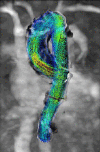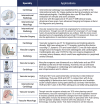Imaging: New Frontiers in Vascular Training
- PMID: 35734160
- PMCID: PMC9165676
- DOI: 10.14797/mdcvj.1093
Imaging: New Frontiers in Vascular Training
Abstract
Advances in medical imaging have redefined the practice of vascular surgery. Current training programs for vascular surgery do not incorporate formal training in vascular imaging other than in duplex ultrasound when a physician is undergoing the vascular interpretation certification process. Yet imaging modalities and techniques have grown exponentially in the adjacent fields of interventional radiology, interventional and diagnostic cardiology, and neuroradiology, so much so that advanced imaging fellowships have been established in these fields. This article reviews the current state of vascular imaging training, identifies gaps in the current training regimen, and proposes an advanced vascular imaging fellowship for the future.
Keywords: fellowship; medical education; vascular imaging; vascular surgery.
Copyright: © 2022 The Author(s).
Conflict of interest statement
The authors have no competing interests to declare.
Figures







References
-
- Creager MA, Hamburg NM, Calligaro KD, et al. 2021 ACC/AHA/SVM/ACP Advanced Training Statement on Vascular Medicine (Revision of the 2004 ACC/ACP/SCAI/SVMB/SVS Clinical Competence Statement on Vascular Medicine and Catheter-Based Peripheral Vascular Interventions). Circ Cardiovasc Interv. 2021. Feb;14(2):e000079. doi: 10.1161/HCV.0000000000000079 - DOI - PMC - PubMed
Publication types
MeSH terms
LinkOut - more resources
Full Text Sources
Medical

